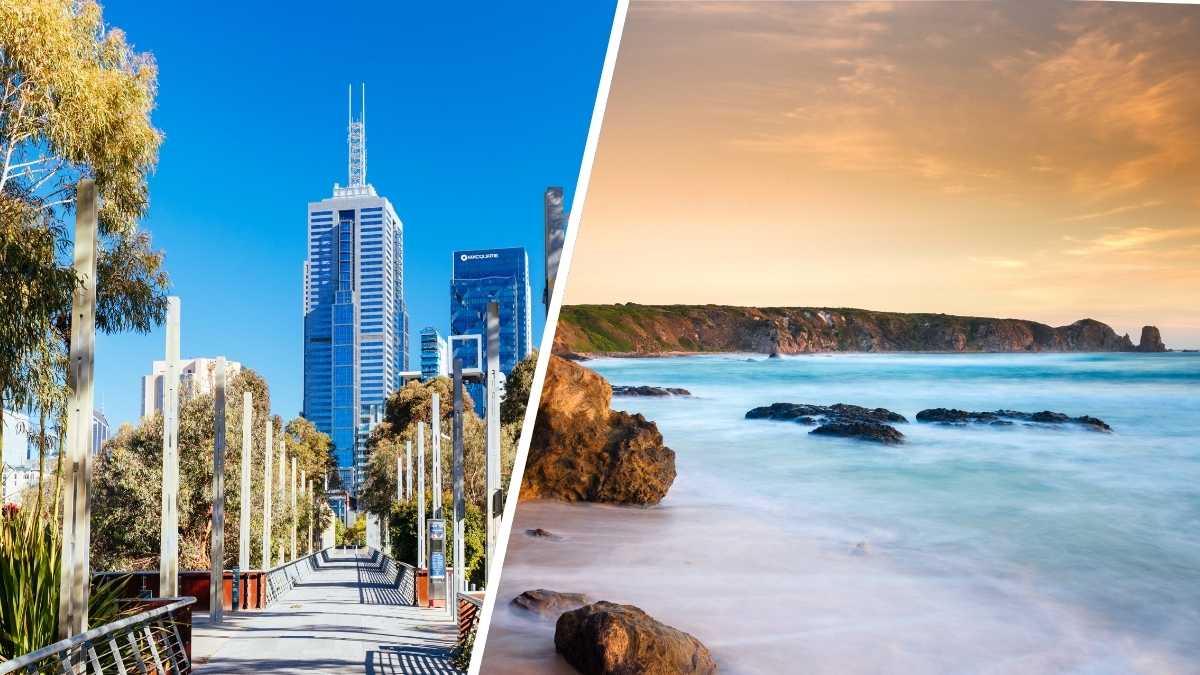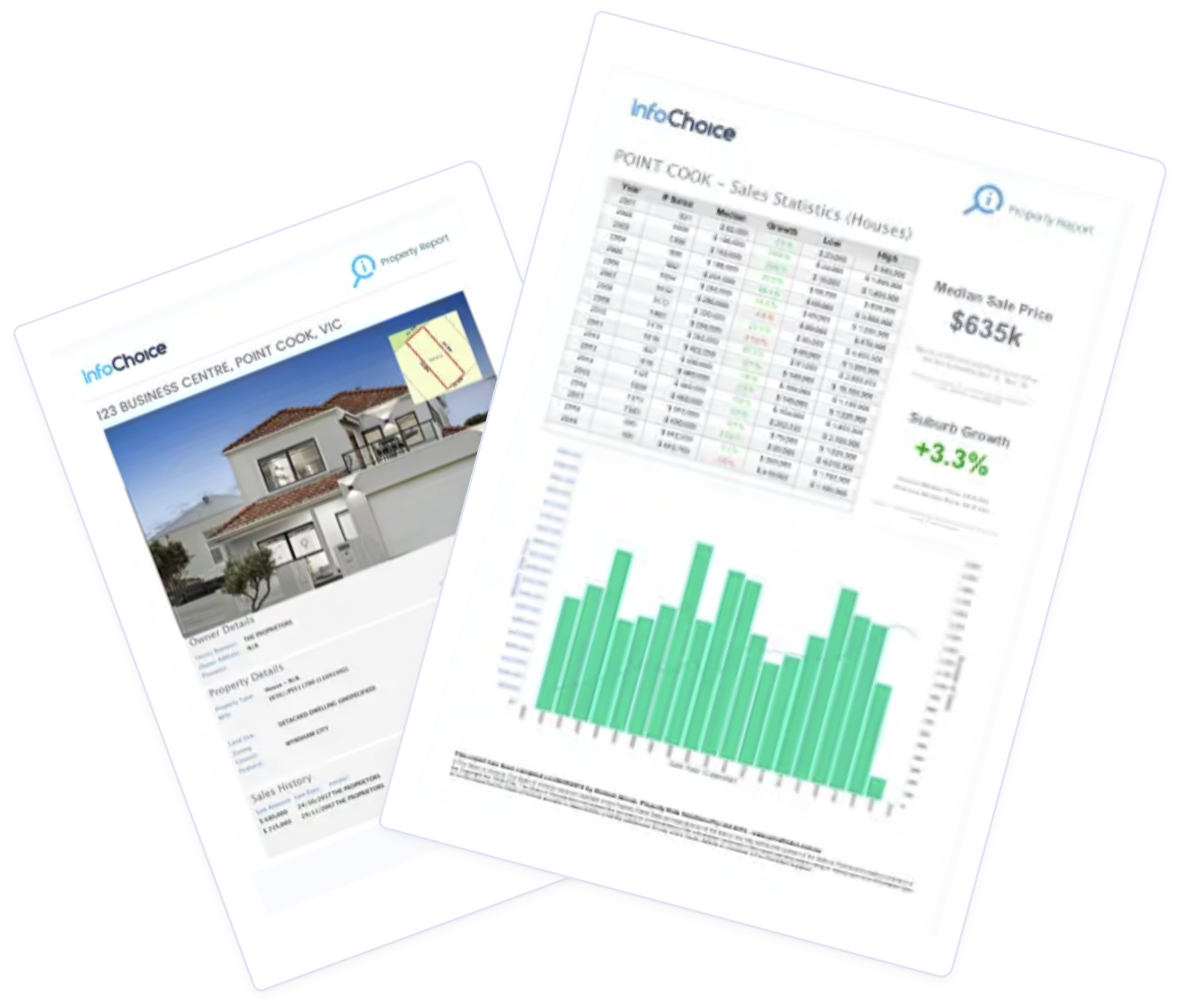
Saving for a deposit can take what feels like years, and years, and years. While staying disciplined with your savings habits is arguably the most important thing, there could be a way to get your hands on a little extra cash to help boost your deposit.
This is where the Victoria First Home Owner Grant (FHOG) comes into play.
How does the First Home Owner Grant work in Victoria?
If you are buying or building a new home valued up to $750,000, you may be eligible for the FHOG of $10,000.
To be eligible, the property must not have been previously sold as a place of residence, occupied as a home, or leased out or used for short-term accommodation, such as Airbnb.
The FHOG can be used on your deposit if you're looking for a cash boost. However, it likely won't be enough to cover the full deposit needed (20% if you want to avoid paying Lenders' Mortgage Insurance) so you'll have to knuckle down and save up the rest.
Which homes can be purchased using the grant?
To take advantage of the FHOG in Victoria, your first home can be a house, townhouse, apartment, or unit.
The FHOG in Victoria is not available for those looking to buy a holiday home or investment property.
First Home Owner Grant eligibility
Unfortunately, you can't just sign up and receive the grant at the click of a button. There are certain criteria you will need to meet in order to be eligible (in addition to the $750,000 price limit).
-
You or your spouse/partner must not have previously received a FHOG in Australia.
-
You or your spouse/partner must not have owned a home or other residential property in Australia, either jointly or separately prior to 1 July 2000.
-
All applicants must be at least 18 years of age (either by the time of settlement or completion of construction) and an Australian citizen or permanent resident.
-
You must occupy the home as your principal place of residence for at least 12 months, commencing within 12 months of settlement or completion of construction.
You may still be eligible for the FHOG if you or your spouse/partner owned property on or after 1 July 2000 and did not live there as your home. For example, Sam bought his first property in August 2005. It was a house and Sam rented it out, he never lived there. As this house is not considered to be his first residential home, he may be eligible for the Victoria FHOG.
How to apply for the Victorian First Home Owner Grant
In most cases, the lender that is providing you with finance will lodge the FHOG application form on your behalf. If you require the grant for settlement or first drawdown/progress payment, you must lodge your application with an approved agent.
Each applicant will need to provide a copy of a primary identity documents and evidence of citizenship or permanent residency. If you are an Australian citizen, this includes:
-
A copy of an Australian birth certificate
-
A copy of an Australian passport
-
A copy of an Australian citizenship certificate
If you are a citizen of New Zealand or another country, you must provide:
-
A copy of your current passport
-
A copy of your permanent residence visa grant notice, including the date on which it was granted
-
Movement record
If you're applying for the FHOG directly to the State Revenue Office, you can fill out the application form online. Each applicant must provide a copy of a primary identity document (as mentioned above) as well as one current document from each of the following categories:
Category 2
Link between identity and person (photo and signature). A copy of one of the following:
-
Australian driver's licence
-
Passport
-
Working with Children Check card
-
Firearms licence (if not used for Category 1)
-
Proof of Age card issued by the Victorian Commission for Gambling and Liquor Regulation (photo ID card)
Category 3
Evidence that each applicant and their spouse/partner reside in Australia.
A copy of the current:
-
Medicare card
-
Motor vehicle registration notice
-
Centrelink or Department of Veterans' Affairs card.
Applications must be lodged within 12 months of settlement or completion of construction.
Victoria stamp duty exemptions/concessions
No matter whether you're purchasing a new or established home, first home buyers may be eligible for a stamp duty exemption or concession.
If the property is valued below $600,000 no stamp duty is payable - a saving of around $31,000.
If your property is worth $600,001 to $750,000, you may be eligible for a stamp duty concession. For example, if you pay $700,000 for your first home, you would normally be required to pay $37,070 in stamp duty costs. However, under the concession, you would only be required to pay $24,713 - a saving of around $12,000.
Keep in mind this exemption or concession is separate from the FHOG. The FHOG is a payment made to you, whereas the first home buyer duty exemption and concession is a reduction in the amount of land transfer duty you pay.
The exemption or concession is only available to you once and can be used for vacant land.
Examples of first home buyer duty concession
| Dutiable value ($) | Normal duty ($) | Duty after concession ($) |
| 605,000 | 31,370 | 1,045 |
| 625,000 | 32,570 | 5,428 |
| 650,000 | 34,070 | 11,356 |
| 675,000 | 35,570 | 17,785 |
| 700,000 | 37,070 | 24,713 |
| 725,000 | 38,570 | 32,141 |
| 745,000 | 39,770 | 38,444 |
Alternative grants you could apply for
Along with the Victoria FHOG, you may be able to receive a helping hand from some other government schemes.
Victoria Homebuyer Fund
The Victorian Homebuyer Fund is a shared equity scheme, making it easier for Victorians to enter home ownership.
If you have a 5% deposit, the Victorian Government could contribute up to 25% of the purchase price in exchange for an equivalent share in the property. This will save you money by reducing your mortgage and removing the need for LMI.
Aboriginal and Torres Strait Islander participants only require a 3.5% deposit and are eligible for a 35% shared equity contribution.
Participants are required to buy back the government's share in their property over time through refinancing, using savings, or upon sale of the property. The Victorian Government does not charge interest on its investment in participants' homes, but shares in any capital gains or losses proportionate to its share in the property.
For more information on the Victoria Homebuyer Fund including eligibility requirements, head to the State Revenue Office website.
Home Guarantee Scheme
The Home Guarantee Scheme ensures part of an eligible buyer's home loan is guaranteed by the Government, meaning Australians can buy a home sooner with a smaller deposit and without the need to pay LMI.
There are three components of the scheme:
-
The First Home Guarantee (FHBG) - supports eligible first home buyers to buy their first home sooner, with a deposit as little as 5%. From October 2025 places and income thresholds are uncapped.
-
The Family Home Guarantee (FHG) - supports eligible single parents with at least one dependent child to buy a home, with a deposit as little as 2%.
First Home Super Saver Scheme
Under the First Home Super Saver Scheme (FHSSS), first home buyers can make voluntary (taxed at a discounted rate of 15%) and non-concessional (already taxed at their marginal rate) contributions to their super fund, which can be withdrawn and used as part of a home deposit.
First home buyers can contribute a maximum of $15,000 in any one financial year to the FHSSS scheme, and a maximum of $50,000 per person overall.
Help to Buy scheme
Introduced by the Albanese Government, the Help to Buy scheme is a 'shared equity scheme' that allows an eligible participant to co-buy a home with the government.
Eligible buyers purchasing a home can receive an equity contribution of up to 40% of the cost of a new home, or 30% for existing homes.
Buyers only need a minimum 2% deposit and are not required to pay LMI.
Find the Right Home Loan with the First Home Owner Grant
If you're eligible for the First Home Owner Grant, you could receive a financial boost toward your deposit - making it easier to step into your first home sooner. But while the grant helps you get started, the home loan you choose will shape your finances for years to come. Not all lenders offer the same rates, fees, or features, so it's worth comparing your options carefully.
| Lender | Home Loan | Interest Rate | Comparison Rate* | Monthly Repayment | Repayment type | Rate Type | Offset | Redraw | Ongoing Fees | Upfront Fees | Max LVR | Lump Sum Repayment | Extra Repayments | Split Loan Option | Tags | Features | Link | Compare | Promoted Product | Disclosure |
|---|---|---|---|---|---|---|---|---|---|---|---|---|---|---|---|---|---|---|---|---|
5.29% p.a. | 5.33% p.a. | $2,773 | Principal & Interest | Variable | $0 | $530 | 90% |
| Promoted | Disclosure | ||||||||||
5.19% p.a. | 5.10% p.a. | $2,742 | Principal & Interest | Variable | $0 | $0 | 80% |
| Promoted | Disclosure | ||||||||||
5.39% p.a. | 5.43% p.a. | $2,805 | Principal & Interest | Variable | $0 | $530 | 90% |
| Promoted | Disclosure |


